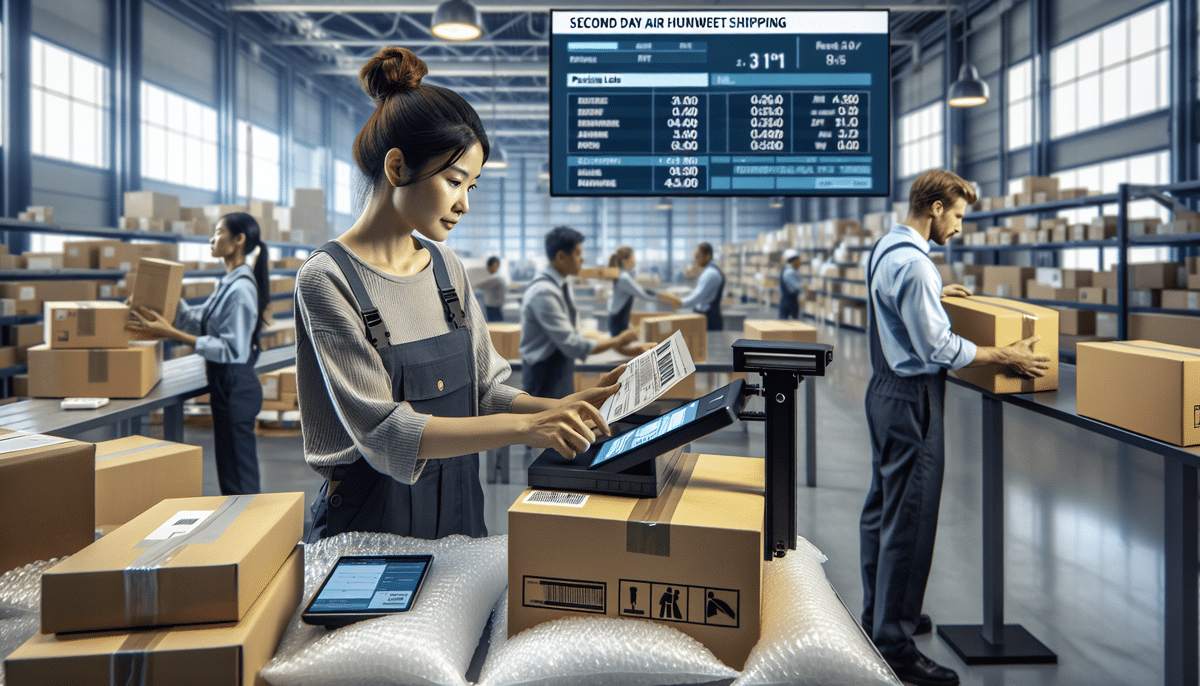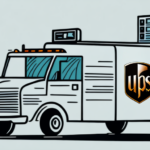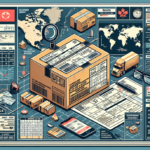Understanding UPS Chargeback for 2nd Day Air Hundredweight Shipping
If you're involved in the logistics industry, you're probably familiar with UPS chargebacks. They can be a major inconvenience for shipping companies, particularly when it comes to second day air hundredweight shipping. But what exactly is a UPS chargeback, and what causes it with second day air hundredweight shipping? In this article, we'll explore all of these questions and more, providing you with in-depth analysis, relevant data, and actionable insights.
What is UPS Chargeback and Why Does it Matter for Second Day Air Hundredweight Shipping?
A UPS chargeback occurs when a package is not delivered on time or is delivered in a damaged condition. In these situations, the shipper must provide compensation to the recipient, either through a refund or a replacement package. This compensation can be costly, particularly when it comes to second day air hundredweight shipping.
Second day air hundredweight shipping is a popular choice for shipping companies that need to deliver high-value, time-sensitive products quickly. According to the UPS 2023 Annual Report, approximately 20% of all UPS shipments utilize expedited services like second day air, highlighting its importance in the logistics sector. However, this type of shipping is also subject to strict regulations and requirements, which can increase the likelihood of a UPS chargeback.
Understanding UPS chargebacks and the potential risks associated with second day air hundredweight shipping is essential for any shipping company that wants to stay competitive and profitable.
One way to reduce the risk of UPS chargebacks for second day air hundredweight shipping is to ensure that all packages are properly packaged and labeled. This includes using sturdy boxes, appropriate cushioning materials, and clear and accurate labeling. Additionally, it is important to communicate with the recipient about the expected delivery date and time, and to provide tracking information so that they can monitor the package's progress. By taking these steps, shipping companies can minimize the risk of UPS chargebacks and ensure that their customers receive their packages on time and in good condition.
The Benefits and Drawbacks of Second Day Air Hundredweight Shipping
Second day air hundredweight shipping offers several advantages over other shipping options:
- Speed and Reliability: It is faster and more reliable than standard ground shipping, making it ideal for time-sensitive shipments.
- Cost-Effective: More affordable than overnight shipping, which can be prohibitively expensive for many shipping companies.
- Flexibility in Weight: Allows for packages weighing up to 100 pounds, accommodating heavier or bulkier items.
However, there are also some drawbacks to consider:
- Strict Regulations: Subject to strict regulations and requirements, increasing the likelihood of a UPS chargeback.
- Limited Availability: May not be available in all areas, particularly remote or rural locations.
- Variable Costs: Shipping costs can vary depending on the distance and weight of the package, making it difficult to predict expenses in advance.
According to a Forbes Logistics Report 2023, the demand for expedited shipping options like second day air is expected to grow by 15% over the next five years, driven by e-commerce expansion and consumer expectations for faster delivery times.
How to Calculate the Cost of Second Day Air Hundredweight Shipping
The cost of second day air hundredweight shipping can vary based on several factors:
- Weight and Size: Heavier and larger packages incur higher shipping fees.
- Destination: Shipping to remote or international locations can increase costs.
- Shipping Company: Different providers may offer varying rates and services.
To calculate the cost of this type of shipping, consider using a pricing calculator or contact the shipping company directly for a personalized quote.
Additionally, some shipping companies offer discounts for bulk shipments or frequent users. For example, ShipScience Business Discounts provide reduced rates for companies shipping more than 1,000 packages monthly, potentially saving businesses up to 10% on shipping costs.
Using lightweight and durable packaging materials can also help reduce the overall weight and size of the package, ultimately lowering the shipping cost. Proper labeling with accurate shipping information is crucial to avoid delays or additional fees.
What Causes UPS Chargeback for Second Day Air Hundredweight Shipping?
Several common reasons can lead to a UPS chargeback for second day air hundredweight shipping:
- Incorrect weight or dimensions declared for the package
- Insufficient packaging that leads to damage in transit
- Inadequate preparation of the shipment, such as failure to properly label the package or provide required documentation
- Delayed pick-up or delivery
- Inclement weather or other natural disasters that interrupt the shipping process
- Use of prohibited items in the package
- Recipient refusal to accept the package or undeliverable packages
According to the National Retail Federation's 2023 Report, packaging-related issues account for approximately 30% of all UPS chargebacks, underscoring the importance of adequate packaging and accurate declarations.
To mitigate these issues, ensure compliance with UPS's shipping guidelines and maintain open communication with recipients to confirm availability for delivery.
Tips for Avoiding UPS Chargeback with Second Day Air Hundredweight Shipping
Implementing the following best practices can help shipping companies avoid UPS chargebacks:
- Accurate Declarations: Always declare the correct weight and dimensions of the package.
- Proper Packaging: Use high-quality packaging materials and techniques to protect the contents.
- Complete Documentation: Ensure all required shipping documents are included and accurately filled out.
- Timely Pick-Up and Delivery: Adhere to scheduled pick-up times and strive for prompt delivery.
- Monitoring Progress: Use tracking tools to monitor the package's journey and address any issues immediately.
Additionally, consider the cost associated with second day air hundredweight shipping. While it offers speed and reliability, it can be more expensive than other options. Evaluate whether the urgency of the shipment justifies the higher cost. For non-urgent packages, slower shipping methods might be more cost-effective.
Effective communication with the recipient is also crucial. Use tracking information and provide estimated delivery times to help recipients prepare for the arrival of their packages. This reduces the likelihood of delivery refusals or missed deliveries, which can lead to chargebacks.
Comparing Other Shipping Options to Second Day Air Hundredweight Shipping
When deciding on a shipping method, consider the following alternatives to second day air hundredweight shipping:
- Ground Shipping: Slower but more cost-effective for non-time-sensitive shipments.
- Next-Day Shipping: Faster but more expensive option for highly urgent shipments.
- Priority Mail: Offered by the United States Postal Service, providing fast and affordable shipping for packages up to 70 pounds.
- Freight Shipping: Suitable for larger and heavier shipments, typically over 150 pounds, and may require special handling like palletizing or crating.
Each shipping option has its own set of advantages and limitations. According to Inbound Logistics, selecting the right shipping method depends on factors such as package size, weight, destination, and delivery timelines.
For instance, freight shipping can be more cost-effective for large-volume shipments, despite longer transit times. Evaluating your specific shipping needs against the features of each option can help you make informed decisions that balance cost and efficiency.
How to Negotiate Better Rates for Second Day Air Hundredweight Shipping
Negotiating better rates with shipping companies can significantly reduce the cost of second day air hundredweight shipping. Here are some strategies:
- Compare Rates: Obtain quotes from multiple shipping companies to identify the most competitive rates.
- Leverage Shipping Volume: Use your shipping volume or frequency as leverage to negotiate discounts. Companies like ShipScience Partner Program often offer tailored discounts for high-volume shippers.
- Negotiate Based on Package Size and Weight: Discuss rates that reflect the specific size and weight of your typical shipments.
- Use Third-Party Logistics Providers: Third-party logistics (3PL) providers can negotiate better rates on your behalf due to their established relationships with shipping carriers.
Regularly reviewing your shipping invoices is also essential. Ensure all charges are accurate and dispute any discrepancies promptly to avoid unnecessary costs.
Additionally, consider consolidating shipments or optimizing packaging to reduce weight and dimensions, further lowering shipping expenses.
Best Practices for Managing the Logistics of Second Day Air Hundredweight Shipping
Effective logistics management is crucial for optimizing second day air hundredweight shipping. Implement the following best practices:
- Clear Shipping Policies: Establish and communicate comprehensive shipping policies and procedures within your organization.
- Employee Training: Train employees on proper packaging techniques and shipment preparation to ensure consistency and compliance.
- Utilize Shipping Software: Employ advanced shipping software or other technologies to streamline the shipping process, automate label creation, and monitor package progress in real-time.
- Issue Tracking and Resolution: Set up a system to track and resolve any issues that arise during the shipping process promptly.
Regularly analyze your shipping data to identify trends and areas for improvement. Metrics such as delivery times, shipping costs, and customer feedback can provide valuable insights for optimizing your logistics operations.
Implementing these practices not only reduces the risk of UPS chargebacks but also enhances overall operational efficiency and customer satisfaction.
Important Considerations When Choosing Second Day Air Hundredweight Shipping as Your Preferred Method
Before selecting second day air hundredweight shipping as your preferred method, evaluate the following factors:
- Value and Urgency: Assess the value of the shipment and the necessity for expedited delivery.
- Package Weight and Size: Ensure that your shipments comply with the weight and size limits for second day air hundredweight shipping.
- Destination: Verify that the shipping destination is serviced by second day air options.
- Regulatory Requirements: Familiarize yourself with the regulations and requirements associated with second day air hundredweight shipping to ensure compliance.
Additionally, consider the impact of shipping method on your overall supply chain strategy. Aligning your shipping practices with business objectives can lead to improved efficiency and customer satisfaction.
Common Mistakes to Avoid When Using Second Day Air Hundredweight Shipping
To prevent potential issues and UPS chargebacks when using second day air hundredweight shipping, avoid the following common mistakes:
- Incorrect Weight or Dimensions: Always declare accurate weight and dimensions to prevent overcharges or delivery delays.
- Inadequate Packaging: Use appropriate packaging materials to protect the contents from damage during transit.
- Poor Labeling: Ensure all labels are clear, accurate, and comply with UPS standards to avoid misrouting or rejected shipments.
- Lack of Monitoring: Regularly track your shipments to identify and address any issues promptly.
- Unpreparedness for Disruptions: Have contingency plans in place for potential disruptions like weather events or logistical delays.
By steering clear of these common pitfalls, you can enhance the reliability of your shipping operations and reduce the incidence of UPS chargebacks.
The Future of Second Day Air Hundredweight Shipping: Trends and Predictions
The landscape of second day air hundredweight shipping is evolving, influenced by several key trends:
- Increased Automation and Robotics: Automation is streamlining the shipping process, reducing human error, and increasing efficiency. According to a McKinsey Report, the adoption of robotics in logistics is expected to grow by 25% annually.
- Innovative Packaging Materials: New materials and techniques are being developed to enhance package safety and reduce environmental impact.
- Advanced Tracking Technologies: The use of IoT and real-time tracking systems is improving the ability to monitor packages throughout their journey.
- Global Logistics Expansion: Emerging markets are expanding their logistics infrastructure, increasing the reach and efficiency of second day air services globally.
Staying abreast of these trends will be crucial for shipping companies aiming to maintain a competitive edge and meet evolving customer expectations.
Conclusion
UPS chargebacks can pose significant challenges for shipping companies, especially when utilizing second day air hundredweight shipping. However, by understanding the underlying causes and implementing proactive measures, companies can mitigate these risks effectively. The strategies and best practices outlined in this article, supported by industry data and expert insights, provide a comprehensive guide to navigating the complexities of expedited shipping. Embracing these approaches will not only help avoid UPS chargebacks but also enhance overall shipping efficiency and customer satisfaction, ensuring your business remains competitive in the dynamic logistics landscape.






















